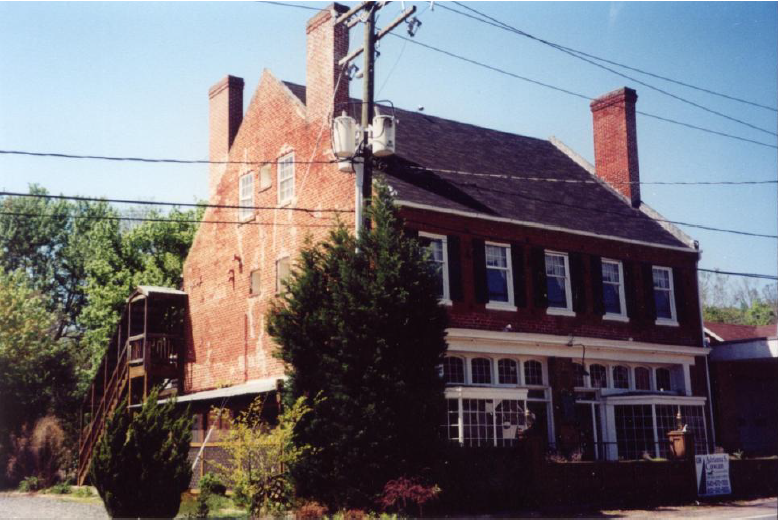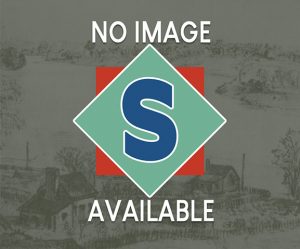Ordinaries and Taverns
Tavern—a place where travelers or local residents could go for alcoholic or non-alcoholic beverages, food, games, sharing news, visiting friends, etc. There were different taverns that served different socio-economic groups from laborers to gentry. Women rarely entered taverns. During the years leading up to the American Revolution, the pros and cons of separation from England were hotly contested in the colonial taverns. Tavern owners could apply to the court for a special permit allowing “private entertainment” to be conducted at their tavern. This merely meant that various forms of gambling were legal there.
Ordinary—similar to a tavern except that ordinaries also provided lodging for travelers and had stables where the horses could be fed, watered, and rested. Some ordinaries had special accommodations for a family or for women traveling with their husbands. Men traveling alone shared a bed or floor mat with one or several other men whom they likely did not know. Rather than sleeping lengthwise in a bed as we do today, in these situations, the men slept crossways of the bed with their legs and feet hanging over the side of the bed. This enabled more men to be lodged in the same bed.
From the earliest years of the county’s history, taverns and ordinaries existed to meet the needs of residents and travelers. Most of the early towns had one or more such businesses. Stafford’s earliest village or town was called Aquia. Although no trace of the town survives today, it was located in what is now Aquia Harbour subdivision. Prior to the establishment of an official postal service, people often left letters at their local ordinary. If a customer visiting the ordinary was traveling in the same direction as a letter needed to go, he would carry the letter with him and leave it at another ordinary nearer to its intended destination. This was a very slow means of moving the mail, but it worked rather well.
Development of roads came slowly to Stafford because until around 1760 most people lived on navigable water. As inland development occurred, narrow dirt roads were cut. These linked plantations to the courthouse, churches, ferries, and wharves. The development of inland roads encouraged the establishment of taverns and ordinaries along their routes. By the mid-18th century, these normally stood about every 15 miles on the more traveled roads. This was a distance comfortably traveled in a day by a man on a horse.
Taverns and ordinaries were sometimes built specifically to serve that function. More often, people ran these businesses within their own homes. From the late 1600s the county court collected an annual licensing fee from those who conducted these businesses. Laws governing the rights and responsibilities of tavern keepers and customers were adopted by the House of Burgesses.
Stafford had many taverns and ordinaries. Ashby’s Tavern operated during the early to mid-1700s and was located where modern Lunga Reservoir was built on the Quantico Marine Corps base (In 1942 the U. S. Government condemned 30,000 acres in the northern part of Stafford for the expansion of Quantico). The road on which Ashby’s stood ran from Brent Town (now Brentsville) to Aquia Town (now Aquia Harbour subdivision) and, during the 18th and early 19th centuries this was a major east/west road. Peyton’s Ordinary (operated by Yelverton Peyton) stood on this same road somewhere between Aquia Church and the town of Aquia.
Until around 1780, the county court met at various locations on Potomac Creek. By that time, more people had moved to inland farms and the roads were so bad that it was difficult for many residents to get from their homes down to Potomac Creek. Around 1780 the court commenced meeting at William Garrard’s Ordinary. This stood near the present school board offices just northeast of the current courthouse. A new courthouse was built here and put into operation in 1783. Many people came to the courthouse to conduct a range of business, creating a need for more than one tavern/ordinary. Garrard’s remained in operation until at least 1862. There was also an ordinary to the immediate south of the courthouse in the vicinity of modern Aquia Realty. Ordinary/tavern operators in the 18th and early 19th centuries at or near the courthouse included William Garrard, Thornton Alexander, Moses Phillips, and Richard Morton. There were very likely others.
The town of Marlborough on Potomac Creek also had several taverns and ordinaries as well as a horse racing track. For a period of years the county court met at Marlborough and there was considerable activity with people crossing the Potomac River between Marlborough and Maryland.
Falmouth was a very busy town from the early 1720s until 1862. From its birth until the mid to late 1700s, ocean-going sailing vessels docked at its large stone wharf. The ships picked up tobacco and barrels of flour and delivered to Falmouth a wide range of European merchandise. This was sold in Falmouth’s numerous stores and hauled to other towns as far west as Winchester, Virginia.
Many people came to Falmouth to bring their tobacco, fruits and vegetables, and other goods and to buy items from the stores. The town was also frequently occupied by sailors from the ships. This level of activity created a demand for taverns and ordinaries and several of them existed in the town. About half way up Washington Street is a little brick building commonly called the Temperance Tavern or Inn. In reality this was built around 1820 as a combination dry goods store and residence. It operated only briefly as a tavern in the mid-19th century.
One of Falmouth’s earliest taverns was called the Swan and it stood very near where the Falmouth Bridge crosses River Road. Vowles’ Ordinary occupied what is now a parking lot on Butler Road near the automobile dealership.
Taverns and ordinaries evolved into our modern restaurants and motels/hotels.
(The above information is from author Jerrilynn Eby MacGregor)
Peyton’s Ordinary
There is an historical marker for Peyton’s Ordinary on Route 1 about a mile south from the juncture of Route 1 and Garrisonville Road. Historians believe it was not at that location, however, but think it was probably on a ridge by Aquia Church, as there is a spring there, a necessity for an ordinary.
Peyton’s Ordinary was quite busy from at least the 1760s until the mid-nineteenth century. According to county court records, Yelverton Peyton was granted a license to keep an ordinary in 1768. Peyton was a Stafford justice and a well-respected gentleman.
On March 6, 1769, George Washington dined at Peyton’s Ordinary. He also spent the night there on October 31, 1769, on his way to the House of Burgesses and again on September 14, 1772. General Rochambeau’s army, marching north from Williamsburg camped there in 1782.
(Above information from Jerrilynn Eby’s book, They call Stafford Home.)
Temperance Tavern

Located on Washington Street in Falmouth is Temperance Tavern. It was originally built as a warehouse. Its 18-inch-thick load-bearing brick walls support a slate roof. As a warehouse it was unheated and had smaller arched windows. William Brooke, Jr. built the tavern in 1820. An inventory list in Stafford Courthouse gives some insight into what was in the building during its warehouse phase. The inventory included horse collars, bridles, tacks and nails, sets of knives and forks, sets of cooking instruments, rat traps, hatchets, corn axes, molasses, cakes of shaving soap, white domestic cotton, flax seed, salt peter, and more.
As the Falmouth area became less of a seaport and more of an avenue to the West, the building changed to become a hotel for travelers. About 1835, or shortly thereafter, three fireplaces were added to the north end of the building. The large exterior chimney opened to two corner fireplaces downstairs, one to a kitchen, and the other to a formal dining/sitting room. The third one upstairs opened into a large master bedroom. Large 6-over-9 windows with sandstone sills, brick sidewalks with sandstone curbs, and sandstone thresholds also appeared.
In 1839, an ad was placed in the Political Arena. It mentioned that the place was now called the “Falls’ Temperance House.” Notice how the advertisement mentioned that it would be for temperance travelers and alcohol would not be permitted.
The Proprietress has, at considerable pains and expense, fitted up, in the best manner, for the accommodation of the Public, the above establishment, in the Town of Falmouth, on strictly temperance principles, where every attention to the comfort of visitors, travelers, and their families, will be dispensed, and no exertion spared to make their stay pleasant and agreeable. Attached to the premises are good Stables and Carriage Houses. Boarders will be received by the week, month, or year, and rooms, fire and lights, furnished, if required. Patronage is respectfully solicited. Refer to B. Gordon and M. Forbes, Esqrs. and Capt. D. Green, Falmouth.”
Legend has it that the tavern on West Cambridge Street, now known as Amy’s Café, served alcohol. So this establishment provided lodging for men and their families who did not wish to partake of alcoholic beverages.
In 1886, the Brown family purchased the tavern and turned it into a domestic dwelling. From that time forward it has remained a private residence.
(Most of the above information from Jack Edlund’s article on Temperance Tavern found in Foundation Stones I.)
Spotted Tavern
Hartwood’s Spotted Tavern Farm, located west of State Route 612 (Hartwood Road), is the site of a tavern that provided lodging to early travelers, many on their way to Falmouth to market their farm products and other wares. Dating to 1830 and perhaps earlier, the farm has changed hands several times.
Information on the history of the tavern is sketchy. Works Progress Administration (WPA) reports stated that, according to Miss Gertrude Bowling of Cropp, Virginia, the tavern was owned in 1855 by Frank Forbes, a wealthy enslaver who hired a succession of overseers, many of whom mistreated the enslaved. However, in 1861, the first year of the Civil War, Forbes hired Elie Embrey, a more merciful overseer who moved to the tavern with his wife, Kitty, and two daughters. Most of the enslaved liked the Embrey family; though many of the 100, or so, enslaved persons on the farm joined the Union Army when it came to the area during the war. Many Union Soldiers wrote about staying at the tavern. One Pennsylvania soldier wrote that the Spotted Tavern was “an old log house and one log shanty, which made the place look quite romantic.”
(Above information from article about Spotted Tavern by Cathy D. Harris found in Foundation Stones of Stafford County.)
General Store
(Currently called Amy’s Café)

This building, on West Cambridge Street, was probably originally built as a store or warehouse. Boarding was available on the second floor, as there are fireplaces in each room connected to four external chimneys. Supposedly this was a tavern at one time, for it served alcohol unlike Temperance Tavern located around the corner on Washington Street.
In the 1930s the building was called “The Curb,” an early drive-in restaurant. Patrons would honk their horns for curbside service.

